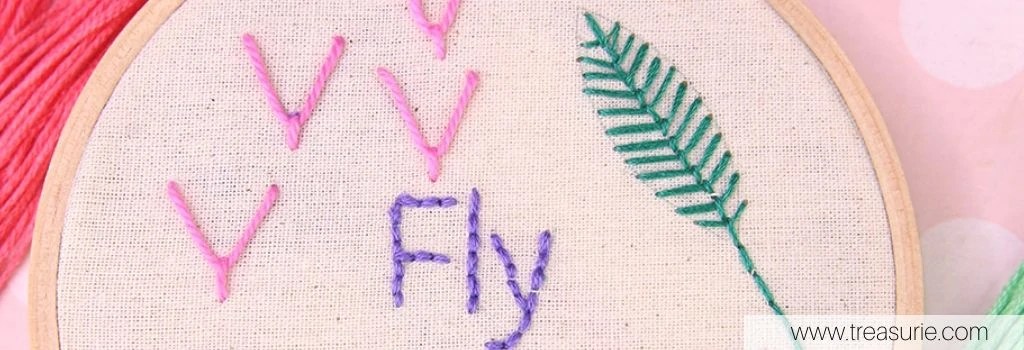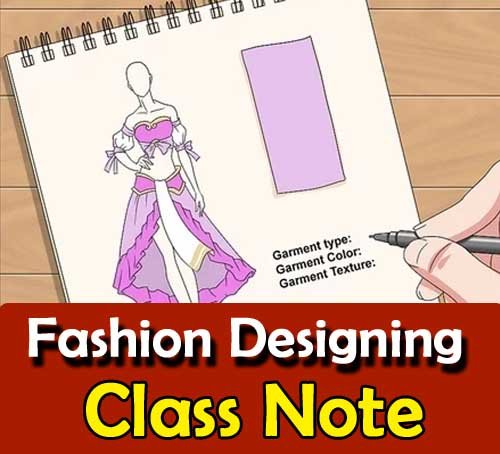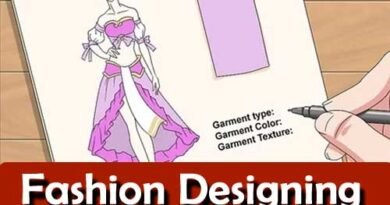Fashion Designing Class Note 39 (Types of Seams)
FRENCH KNOTS
French knots involve twisting the thread around the needle before it is inserted into the fabric. The knots can be used to create fireworks, small flowers such as lavender and are great as the centers of flowers sewn with other stitches. They may be small, but French knots are very useful. The size of French knots can be varied by the number of times the thread is twisted around the needle.
Full Article: How to do French Knots
French Knots
HERRINGBONE STITCH
Herringbone stitch is mostly used for borders of if joined together, a filling stitch. It is worked from right to left between 2 parallel lines and is relatively easy.
Full Article: How to do a Herringbone Stitch
Herringbone Stitch
INVISIBLE STITCH (LADDER STITCH)
Invisible stitch is also called ladder stitch or slip stitch and is used to close open seams on toys, beanbags and clothing. It is stitched into the crease of the opened seam in a zig-zagging pattern before it is pulled closed. As the name suggests, it gives an invisible closure when sewn in a matching color thread.
Further Reading: Invisible Stitch
Invisible Stitch
LAZY DAISY
The lazy daisy stitch is a type of chain stitch used to create flowers and daisies. You can vary the number of petals and the size of the center to create different looks. It is often used in conjunction with the French knot in the center.
Full Article: How to do a Lazy Daisy
Lazy Daisy Stitch
LONG AND SHORT STITCH
Long and short stitch is also known as brick stitch and consists of straight interlocking stitches that form a solid block. It is often used to delicately shade shapes and using variegated threads looks very artistic.
Further Reading: Long and Short Stitch
SASHIKO STITCH
Sashiko stitch is a variation of the running stitch done in intricate repeating patterns. A traditional Japanese stitch, it is a traditional art form which is easy to do but extremely effective for filling large pieces of fabric.
Full Article: Sashiko Stitch
SATIN STITCH
Satin stitch is a filling stitch used for any shape you can imagine. It is best for smaller shapes as long threads may catch in larger ones. A satin stitch may be used by itself or with a backstitch to create a cleaner border.
Full Article: How to do Satin Stitch
Satin Stitch
SEED STITCH
Seed stitch (which is also called rice stitch) is used as a filling stitch or as a method of padding underneath satin stitch. It is essentially small random running stitches done in a simple up and down motion. The stitches can be all different colors or the one color.
Full Article: How to do Seed Stitch
Seed Stitch
SLIP STITCH
Slip stitch can be used for seams and more importantly, invisible hand hems. Stitches are placed in the crease of the hem so that when done with a matching thread, it is almost invisible.
Slip stitch can also be called ladder stitch or invisible stitch when it is used for the repair of seams.
Full Article: Slip Stitch
SMOCKING
Smocking refers not to a single stitch but rather a group of stitches used to gather fabric without elastic. It is both decorative and functional.
Full Article: Smocking
SPLIT STITCH
Split stitch is used for outlining and creating simple designs. It is considered a straight stitch and if formed by splitting the thread in half. The outline from this stitch is thick and rope-like making it more of a statement stitch.
Full Article: Split Stitch
STEM STITCH
Stem stitch is used for stems and borders and produces a thick rope looking line of stitches placed at a diagonal. It is thicker than a running stitch or backstitch and gives more of a three dimensional look to stems. Fitting name isn’t it?
Full Article: How to do Stem Stitch
Stem Stitch
STRAIGHT STITCH
The straight stitch when used as an embroidery term refers to a group of hand embroidery stitches rather than a single stitch. These are all stitches done in a straight line and can be used for unlimited purposes. Examples include the running stitch, backstitch, fly stitch and fern stitch.
Full Article: How to do Straight Stitch
Straight Stitch
WEB STITCH
Come into my web said the spider to the fly. Do you remember that old saying? Web stitch is a round woven stitch that can be used for webs and makes lovely roses. Use a contrasting or matching thread for the weaving and spokes for different looks.
Full Article: How to do Web Stitch
Web Stitch
WHIP STITCH
Whip stitch can be used for applique and for sewing the seams of felt and other fabrics that don’t fray. It is also a popular stitch for stitching together the pieces of knitting and crotchet.
Further Reading: How to do Whip Stitch
TYPES OF STITCHES – IN CONCLUSION
So there you have 35 types of stitches you can use for hand stitching or machine stitching. You are sure to find something to suit your latest sewing project. Don’t forget to check out my free sewing projects!


